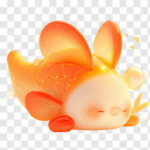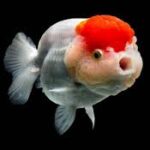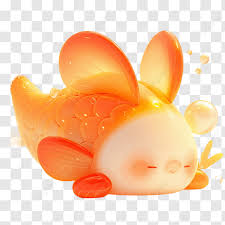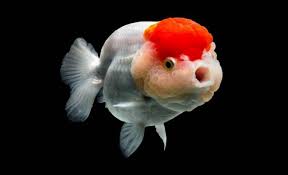
Chinese tea culture is among the oldest and most revered in the world. One of the defining characteristics of Chinese tea is its ability to carry a wide variety of aromas that can invoke different feelings, memories, and connections to nature. With centuries of tradition, tea masters in China have carefully cultivated teas with distinct fragrances, enhancing the experience of tea drinking. This article takes a deep dive into some of the most aromatic types of fresh Chinese tea, exploring their unique scents, flavor profiles, and the traditions surrounding them.
1. Jasmine Tea (茉莉花茶)
One of the most famous and aromatic types of Chinese tea, Jasmine tea is renowned for its delicate and intoxicating floral fragrance. Traditionally made from green tea (though it can also be crafted with white tea, green tea, or oolong tea), Jasmine tea is created by layering the tea leaves with fresh jasmine flowers to allow the tea to absorb their natural fragrance. The process can be repeated several times to ensure the tea leaves are infused with a deep floral aroma.
Aroma and Flavor Profile
-
The fragrance of Jasmine tea is floral, sweet, and light, with a hint of citrus.
-
The flavor of Jasmine tea is smooth, refreshing, and has a slightly sweet finish that balances the floral notes.
-
Jasmine Dragon Pearl is a particularly prized variety, where the tea leaves are hand-rolled into tiny pearls, preserving both their delicate aroma and flavor.
This tea is often enjoyed in China during tea ceremonies, and it pairs wonderfully with light dim sum, sweets, or as an afternoon refreshment. The calming fragrance also has a reputation for relieving stress, promoting relaxation, and uplifting one’s mood.
2. Tie Guan Yin (铁观音)
Tie Guan Yin, also known as Iron Goddess of Mercy, is one of the most famous oolong teas in China. Originating from Anxi County in Fujian Province, this tea is renowned for its intricate flavor profile and its exceptionally fragrant aroma. The tea is made from large, dark green leaves that are partially fermented, giving it the characteristics of both green and black teas.
Aroma and Flavor Profile
-
Tie Guan Yin has a creamy, floral, and orchid-like fragrance, making it one of the most aromatic teas available.
-
When brewed, its taste is smooth, with sweet floral notes and a slightly roasted aftertaste. The orchid-like aroma is the hallmark of this tea, often described as fragrant and elegant.
-
The tea also has a subtle buttery quality and a lingering aftertaste, making it a popular choice for those who enjoy complex teas.
Tie Guan Yin is an excellent choice for tea lovers who appreciate teas that evolve in flavor with multiple infusions. This tea’s unique fragrance and flavor profile make it a highly prized variety among connoisseurs.
3. Longjing Tea (龙井茶)
Longjing, or Dragon Well Tea, is one of China’s most well-known and widely consumed green teas. Hailing from the Hangzhou region in Zhejiang Province, Longjing tea is often regarded as the “king” of Chinese green teas. The leaves are pan-fried rather than steamed, which preserves their freshness and aromatic qualities.
Aroma and Flavor Profile
-
The aroma of Longjing tea is fresh, grassy, and vegetal, with a slightly sweet undertone reminiscent of chestnuts.
-
Its flavor is light, sweet, and smooth, with subtle roasted notes that come from the traditional pan-frying method. The chestnut aroma is particularly dominant in the dry leaves, and it carries through the steeped tea, creating an incredibly fresh and pleasant fragrance.
-
Longjing’s lingering sweetness and clean aftertaste make it a refreshing choice for those seeking a light, yet aromatic, tea experience.
Because of its delicate aroma, Longjing tea is often enjoyed as a refreshing drink during meals or as an accompaniment to Chinese snacks. Its subtle fragrance also makes it an excellent option for serving to guests in social gatherings, where the tea’s aroma can create an inviting atmosphere.
4. Bai Hao Yinzhen (白毫银针)
Bai Hao Yinzhen, also known as Silver Needle White Tea, is considered one of the highest-quality white teas in China. Hailing from Fujian Province, this tea is made from the youngest buds of the tea plant, which are handpicked at the first flush in early spring. The buds are delicately processed, allowing them to retain their delicate fragrance and sweetness.
Aroma and Flavor Profile
-
The aroma of Silver Needle is delicate, floral, and sweet, with a hint of honeysuckle and orchid.
-
The taste is light and refreshing, with a subtle sweetness that lingers on the palate. It is often described as clean, silky, and smooth.
-
Bai Hao Yinzhen has an aroma that is elegant and subtle, with a fragrance that improves with each infusion.
Silver Needle is an excellent choice for tea drinkers who appreciate refined, delicate aromas. It is a great introduction to the world of white tea, and its minimal processing allows the tea’s natural floral and sweet aroma to shine through.
5. Jasmine Pearl Tea (茉莉花珍珠茶)
Jasmine Pearl Tea is a luxurious variation of Jasmine tea, where the tea leaves are carefully rolled into small, tight pearls and scented with jasmine flowers. The process of hand-rolling the leaves helps preserve the fragrance of the jasmine flowers, making the aroma even more intense.
Aroma and Flavor Profile
-
The fragrance of Jasmine Pearl tea is rich, floral, and sweet, with a distinctly perfumed aroma that lingers in the air.
-
The taste is clean and slightly sweet, with the floral notes being more pronounced than in regular Jasmine tea. The hand-rolling technique ensures that the fragrance is deeply infused into the leaves, making it a particularly aromatic and flavorful tea.
-
Jasmine Pearl tea also has a slight fruity undertone, adding an extra layer of complexity to the overall tasting experience.
Jasmine Pearl tea is a premium variety that is loved for its intense fragrance and elegance. It is ideal for those looking to enjoy a luxurious tea experience with a beautiful, lingering aroma.
6. Lapsang Souchong (正山小种)
While Lapsang Souchong is known for its unique smoky flavor, it also has a distinctive aromatic profile that sets it apart from other teas. Originating from the Wuyi Mountains in Fujian Province, this tea is a black tea that is traditionally dried over pinewood fires, which imparts its characteristic smoky aroma.
Aroma and Flavor Profile
-
The aroma of Lapsang Souchong is strong, smoky, and piney, with a touch of sweetness.
-
Its flavor is bold, with a smoky richness that is balanced by hints of fruitiness and a slight woodiness. The smoky aroma is both bold and intriguing, making it a favorite for those who enjoy a heavier, more complex aromatic experience.
-
The smokiness is not overpowering, and it is complemented by the malty sweetness and smooth texture of the tea.
This tea is perfect for those who enjoy teas with strong, aromatic profiles. It is often enjoyed with rich foods, cheeses, or smoked meats, which complement its smoky notes.
7. Huangshan Mao Feng (黄山毛峰)
Huangshan Mao Feng is a highly aromatic green tea that originates from the Huangshan Mountains in Anhui Province. Known for its delicate appearance and refined fragrance, Huangshan Mao Feng is harvested in the spring from young leaves that are meticulously hand-picked.
Aroma and Flavor Profile
-
The aroma of Huangshan Mao Feng is fruity, with hints of chestnut, orchid, and fresh grass. It has a fresh, crisp fragrance that evokes the natural beauty of the Huangshan Mountains.
-
The flavor is smooth and slightly sweet, with a lightly floral and fruity finish. The tea’s subtle sweetness is paired with a refreshing grassy note.
-
The aroma of the brewed tea is incredibly inviting and clean, making it a great choice for tea drinkers who appreciate aromatic green teas.
Huangshan Mao Feng is ideal for those looking for a high-quality green tea with a refreshing and fragrant profile.
Conclusion
The world of Chinese tea is vast and diverse, offering a wide array of aromatic experiences. From the delicate floral notes of Jasmine tea to the smoky richness of Lapsang Souchong, each tea offers its own unique fragrance and taste
ChatGPT đã nói:
. These aromatic teas are more than just beverages—they are a form of art, deeply connected to nature, culture, and centuries-old traditions.
For those seeking to explore the aromatic richness of Chinese tea, starting with the varieties mentioned above will open the doors to a deeper appreciation of this timeless tradition. Each cup is a journey through mountains, valleys, and flower fields, all captured in the steam of freshly brewed tea.









